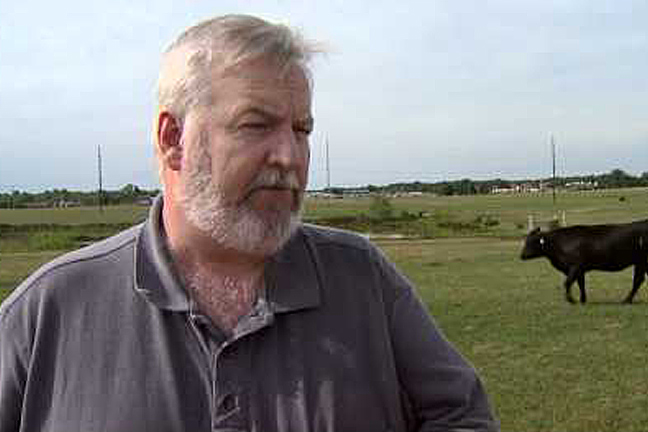
Agricultural News
Poor Forage Conditions a Big Challenge to Oklahoma Ranchers
Mon, 13 May 2013 12:36:57 CDT

Derrell S. Peel, Oklahoma State University Extension Livestock Marketing Specialist, writes in the latest Cow-Calf Newsletter:
Early May provides the first look at the forage conditions facing the beef cattle industry in 2013. Moisture conditions have improved marginally with the most recent Drought Monitor indicating that 33 percent of the U.S. is in D2-D4 drought conditions, down from 40 percent three months ago but worse than last year, when 20 percent of the country was in D2 or worse drought at this time. The drought is now confined mostly to the western half of the country, across much of Great Plains and Intermountain regions, and covering an area that contains a large percentage of beef cows. The long, cold winter has extended the carryover drought impacts with additional demands for hay and more pressure on stressed pastures and ranges.
The May Crop Progress report contains the estimated hay stocks on farms as of May 1. The inventory of 14.2 million tons is the smallest since 2007 and smaller than any May 1 total in data back to 1973. Total hay stocks on May 1, 2013 for the U.S. are down 36 percent from the previous ten year average. Reduced hay production due to drought the past two years and the extended winter demands this spring have pulled hay stocks to extremely low levels. Given current drought conditions and cold weather delays this spring, hay production is likely to be below normal again in 2013, thereby limiting the recovery of hay stocks this year. The region from Ohio to South Dakota and south to Kansas and Missouri has the lowest May 1 hay stocks compared to the ten year average from 2003-2012. Hay stocks for May 1, 2013 were down sharply from average in these states including: Illinois (down 52 percent); Indiana (down 44 percent); Iowa (down 62 percent); Kansas (down 58 percent); Missouri (down 53 percent); Nebraska (down 45 percent); and South Dakota (down 54 percent).
Last week's Crop Progress report also contained the first spring estimates of range and pasture conditions. The report confirms that many areas are beginning the growing season with significantly worse pasture and range conditions than last year. For the entire country, 36 percent of all pasture and ranges are in poor to very poor condition, double the 17 percent value at the same time last year. Regionally, the Great Plains has the worst conditions, with 57 percent in poor to very poor condition; followed by the Southern Plains at 47 percent and the Western region at 37 percent. Pasture and range condition in several individual states are worse than suggested by these regional averages. In New Mexico, 91 percent of the ranges are in poor to very poor condition; followed by Colorado (76 percent); Nebraska (70 percent); Kansas (67 percent); South Dakota (58 percent); Wyoming (55 percent); Montana (54 percent); and Texas (53 percent).
Pasture and hay growth is late this spring due to lingering cold weather and snow cover in many areas. Too much winter was just too much for some producers given the forage limitations and has contributed to unexpected beef cow liquidation this spring and larger than expected marketings of feeder cattle in some regions. In the short run, this is likely augmenting feedlot placements now at the expense of feeder supplies later in the year. The long run impacts may be greater. Some heifers designated as potential replacements on January 1 have likely already been diverted into feeder markets. Beef cow slaughter has been well above year ago levels the past seven weeks and year to date beef cow slaughter is barely down at all year over year. Another year of beef cow herd liquidation may already be inevitable. The next few weeks will determine any chance to stabilize the beef cow herd in 2013 if forage conditions improve and beef cow slaughter declines.
WebReadyTM Powered by WireReady® NSI
Top Agricultural News
More Headlines...




















